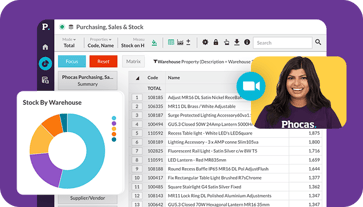Sell smarter, not harder with data analytics
Many professionals subscribe to the notion that hard work will yield greater success. However, filling your day with tasks without a strategy in place, and without strong data, will often lead to feeling overwhelmed rather than productive.
In the 1930s, Allan F. Mogensen, creator of Work Simplification, coined the phrase ‘work smarter, not harder’ as a call to simplify your workload in order to increase efficiency. This concept applies to the work of sales as well. A sales team may invest blood, sweat, and tears into their sales efforts and still not see the fruits of their labors. We’ll discuss key strategies to help your team ‘sell smarter, not harder' using data analytics.
The wrong mix
All the energy your sales team invests will not pay off unless they offer the right product mixes. For instance, a team may focus their efforts on increasing the volume of luxury products sold and still see little effect on profits. This is likely because true luxury products have a lower profit margin. Therefore, focusing your sales efforts on a mix of luxury products with lower-tier complimentary products will yield a better return for your efforts. A restaurant may offer a special on a three-course meal, knowing dessert will provide the greatest profit. However, without the main course, a customer is unlikely to purchase the dessert. Accurate knowledge of product margins eliminates the guesswork so your sales team can focus their efforts on the most profitable mixes.
Analyze customer profitability
Data analytics enables a sales team to evaluate customer profitability with the click of a few buttons. Understanding customer profitability allows a company to improve efficiency and save money by streamlining processes. Analytics can show you which products, in what quantities, customers have purchased over time. This will enable your team to quickly identify potential issues such as a decrease in volume, and why. Your DIFOT may be low due to understock, for example. Or it may be that your sales reps are only visiting customers when there is a problem and not on a regular schedule, or to present new opportunities. Knowing what your customers are buying allows your team to identify new cross- and upsell opportunities. This is critical because a failure to identify these opportunities leaves you vulnerable to the competitors who do.
Empower your team with data.
Data analytics solutions come in many shapes and sizes. When optimizing sales processes, the best results can be seen from solutions that put company data right in the hands of the end user. Having customer data right at their fingertips, your reps are able to quickly identify top and bottom customers, compare sales over time, perform gap analysis and forecasting.
Collecting data from your financial, customer, and supply chain, leading data analytics solutions like Phocas provide real-time information on which products are selling and which are not by branch, region, or person. Mobile access enables reps to prepare for meetings on the go, as well as generate reports right from their tablet or notebook. Empowered with the facts, your reps can identify the best strategy to meet your customers’ needs.


Empowering businesses with intuitive data analytics, driving informed decisions for growth and profitability. We make people feel good about data.
Related blog posts

Manufacturers, distributors and retailers rely heavily on their suppliers to deliver quality products on time and at the right price. Strong supplier relationship management (SRM) is essential for these industries because it enables you and your suppliers to map out the supply chain, achieve economies of scale and offer customers an extensive choice of products.
Read more
DIFOT (Delivered In-Full, On-Time) or OTIF (On-Time In-Full) is a fundamental KPI when analyzing the performance of your supply chain. The main goal is to get your customers the products they need, when they need them, in the quantity they ordered. DIFOT measures how successful your business is at achieving this objective and identifies procurement problems and supplier reliability.
Read more
Customer segmentation has been around for decades, but in many organizations, it’s still underutilized. Done right, it’s one of the most powerful tools to help sales teams focus their time and energy, optimize resources and improve the customer experience.
Read more
Picture a football coach preparing for the big game. He watches game‑tape, studying player metrics, analyzing every play and using real‑time stats to inform strategy. That’s exactly how sales managers and sales leaders should approach their coaching program—with a data‑driven approach.
Read moreBrowse by category

Find out how our platform gives you the visibility you need to get more done.
Get your demo today